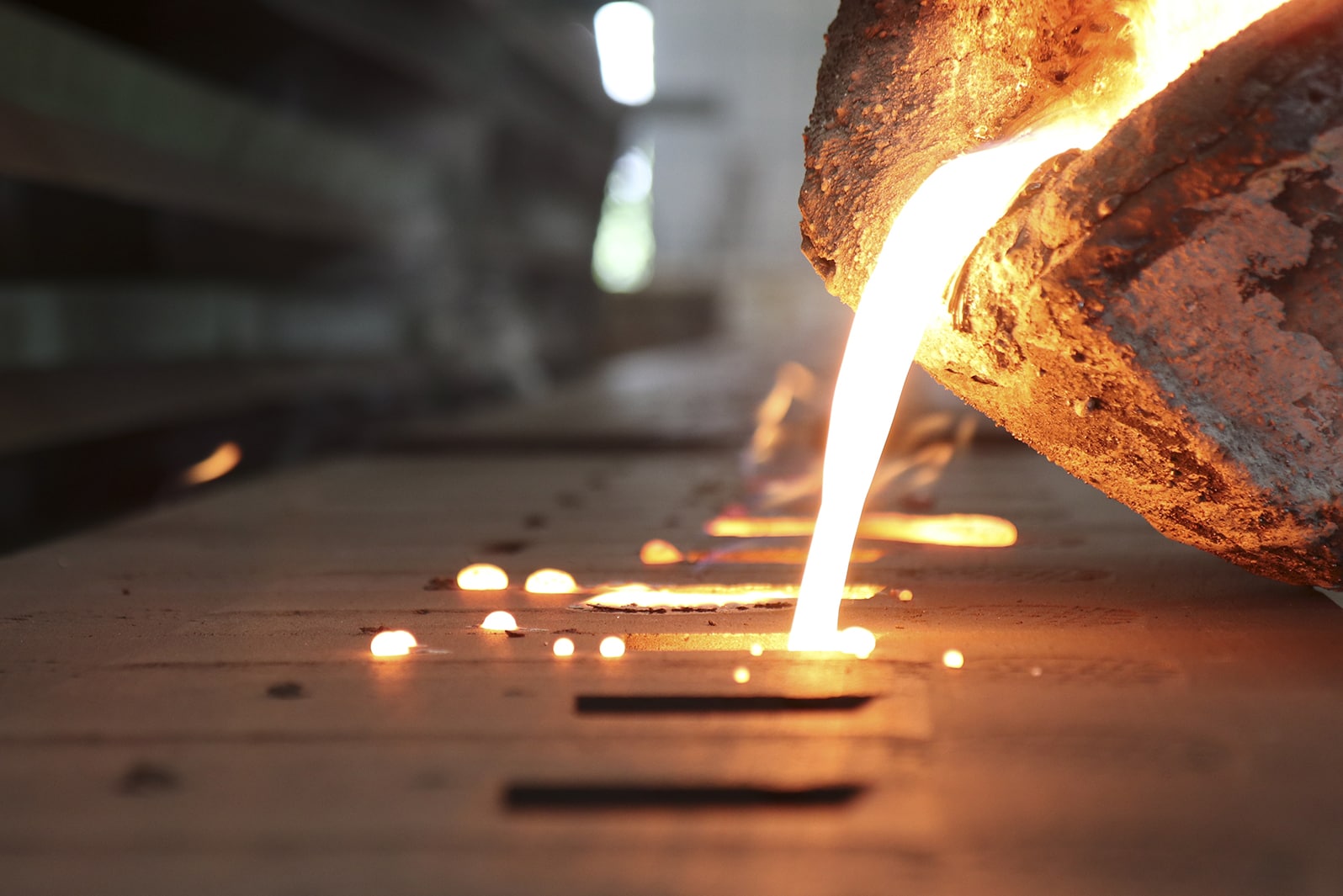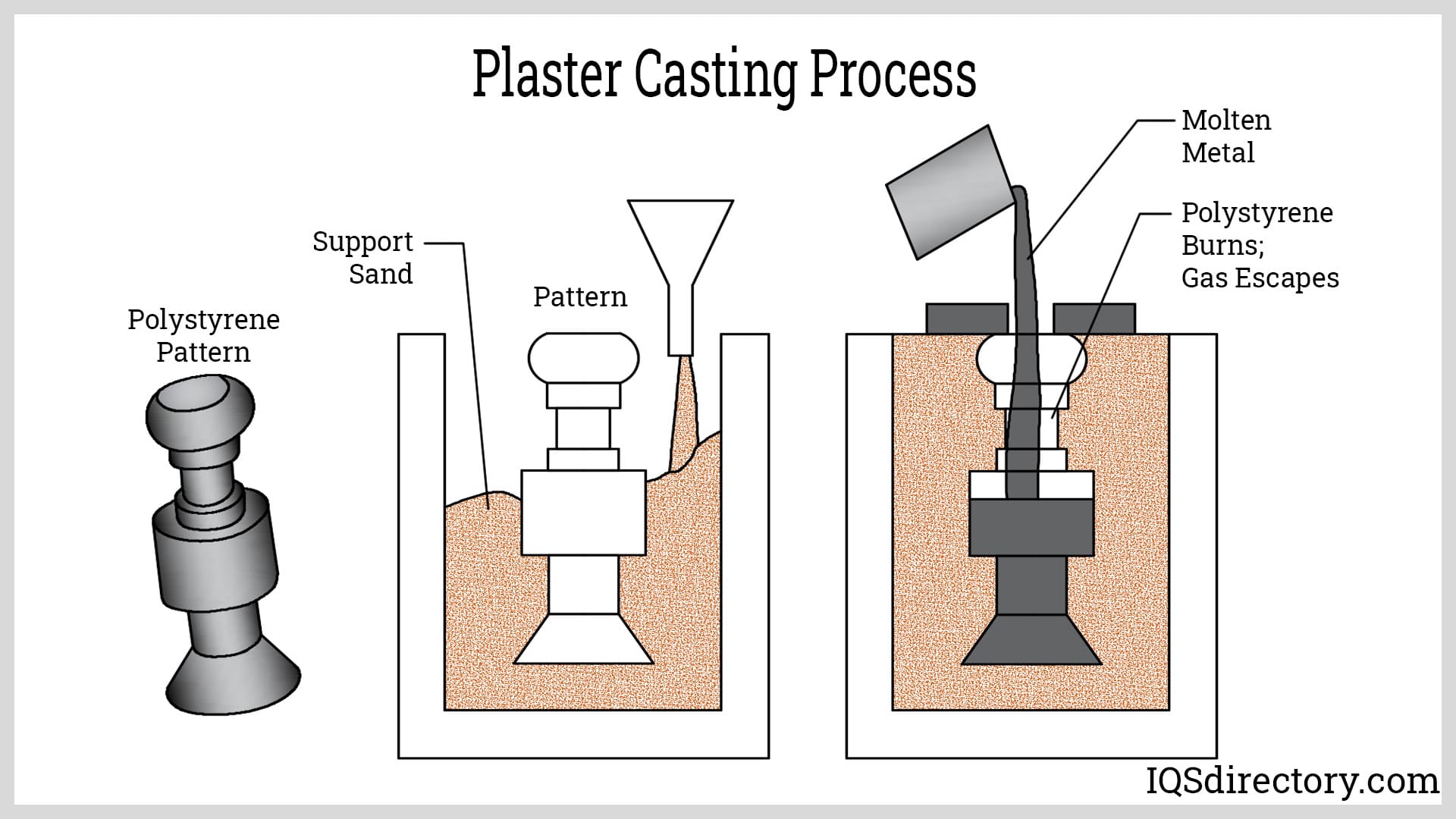Wisconsin Aluminum Foundry: driving excellence in metal casting solutions
Wiki Article
Recognizing the Steel Castings Process: A Comprehensive Guide for Beginners
The Metal Casting procedure is an essential method in manufacturing that changes molten steel into solid kinds. Novices should understand the various approaches included, such as sand casting and pass away casting. Understanding the products, style principles, and precaution is equally important. Each facet plays a vital function in achieving effective results. As one browses these ins and outs, the concern of how to maximize each step for boosted results becomes significantly essential.The Fundamentals of Steel Casting
Although Metal Casting has actually progressed over centuries, its essential principles remain essential and regular to the manufacturing procedure. At its core, Metal Casting involves the change of liquified steel into solid things via various methods. The procedure begins with the development of a mold and mildew, which specifies the shape of the final item. As soon as the mold is prepared, metal is heated up to its melting point and poured right into the tooth cavity. After cooling, the metal solidifies, taking the form of the mold.There are several casting methods, consisting of sand casting, financial investment spreading, and pass away spreading, each with unique advantages and applications. The selection of strategy relies on factors such as production volume, material type, and preferred accuracy. When cast, the last item might undertake added procedures like machining or surface area therapy to attain the called for coating and requirements. Understanding these basics is necessary for any person curious about the area of Metal Casting.

Recognizing Products Made Use Of in Metal Casting
Products play an important duty in the Metal Casting process, affecting the final item's homes and efficiency. Various steels are utilized, including light weight aluminum, iron, bronze, and steel, each offering distinctive qualities fit for specific applications. Aluminum is corrosion-resistant and light-weight, making it optimal for auto parts. Iron, especially cast iron, is preferred for its excellent wear resistance and toughness. Steel provides high stamina and convenience, often utilized in hefty equipment parts. Bronze, known for its corrosion resistance and machinability, is frequently used in aquatic applications.Along with the metals, numerous casting products, such as sand, plaster, and ceramic, are made use of to create molds. Sand spreading, the most prevalent technique, makes use of silica sand as a result of its thermal stability and ability to form elaborate shapes. Plaster and ceramic molds use better information yet might call for even more intricate procedures. The selection of products straight influences the performance, price, and top quality of the spreading procedure.
The Layout Refine: From Idea to Plan
The style process in Metal Casting begins with the initial concept development, where concepts are generated and assessed. This is complied with by the application of CAD modeling techniques, enabling precise visualizations of the design. Finally, the blueprint finalization steps guarantee that all specifications are properly recorded for manufacturing.Preliminary Idea Development
First idea development marks an essential phase in the Metal Casting procedure, where ideas change right into concrete designs. During this phase, developers team up with stakeholders and engineers to brainstorm and fine-tune initial principles. They take into consideration variables such as performance, aesthetics, and manufacturability, ensuring that the design meets the needed specifications and efficiency requirements. Illustrations and harsh drafts are created to picture the principles, enabling for initial evaluations of usefulness and cost-effectiveness. This phase additionally entails recognizing materials and possible casting approaches that line up with the layout goals. Inevitably, initial principle development prepares for a complete blueprint, assisting the succeeding phases of the spreading process and making sure an effective shift from idea to fact.CAD Modeling Techniques
Transforming ideas right into accurate layouts, CAD modeling techniques play an essential function in the Metal Casting procedure. These techniques use innovative software to produce thorough three-dimensional models that precisely mirror the desired product. By utilizing devices such as parametric modeling, strong modeling, and surface area modeling, designers can manipulate dimensions and forms easily. CAD systems also help with simulation and evaluation, permitting the recognition of potential defects before manufacturing starts. This aggressive approach reduces material waste and enhances the style for manufacturability. Furthermore, CAD designs can be conveniently changed, making it possible for fast iterations based on feedback. Fundamentally, CAD modeling acts as the backbone of the design process, bridging the gap in between first principles and the ultimate production-ready layouts.Plan Completion Tips
Complying with the development of in-depth CAD designs, the next phase involves blueprint completion, which is critical in translating electronic layouts right into workable strategies for production. This process starts with assessing the CAD versions for accuracy and conformity with requirements. Once verified, the measurements, resistances, and product specs are thoroughly outlined to guarantee clarity. Including comments and notes assists communicate important information relating to spreading processes, surface coatings, and assembly requirements. The wrapped up plan goes through a rigorous authorization process, frequently involving cooperation with engineers and manufacturing groups to deal with any kind of prospective issues. Nevertheless modifications are made and approvals gotten, the blueprint is formally released, working as the foundational record for the subsequent stages of Metal Casting, consisting of pattern making and mold and mildew style.The Steel Casting Methods Explained

Metal Casting methods include a range of techniques utilized to shape molten metal right into desired forms. These techniques vary according to the kind of product, complexity of the layout, and manufacturing volume. Sand spreading is one of the most typical approaches, entailing the production of a mold and mildew from sand to hold the molten metal. Financial investment spreading, or lost-wax spreading, permits elaborate designs by utilizing a wax pattern that is dissolved. Pass away casting utilizes high-pressure injection of liquified steel into a mold, ideal for mass production. Other approaches consist of permanent mold and mildew spreading, which utilizes reusable mold and mildews, and centrifugal casting, where rotational forces aid in filling up the mold. Each strategy has its advantages and applications, making it essential for makers to choose the appropriate approach based on their specific requirements and demands. Recognizing these methods is necessary for anybody associated with the Metal Casting procedure.
Finishing Procedures: Enhancing Your Casted Product

Completing procedures play a necessary duty in boosting the quality and appearance of casted products. Various surface treatment techniques, such as polishing and covering, are employed to improve sturdiness and appearances. In addition, top quality inspection methods guarantee that the final product meets specified standards and performance requirements.
Surface Therapy Techniques
A variety of surface area therapy methods play a necessary function in improving the top quality and durability of casted products. These strategies consist of approaches such as shot blasting, polishing, and covering. Shot blowing up successfully gets rid of surface area imperfections, boosting the practical and aesthetic characteristics of the spreading. Sprucing up supplies a smooth finish, which is specifically vital for ornamental applications and components calling for very little rubbing. Covering strategies, such as electroplating or powder finish, offer added security against deterioration and wear, guaranteeing resilience. Surface area therapies can boost bond for succeeding processes, such as paint or bonding. By employing these approaches, producers can attain premium surface area quality, which is essential for the performance and life-span of Metal Casting in various applications.High Quality Inspection Techniques
Reliable high quality examination methods are crucial for guaranteeing the stability and efficiency of casted products after the completing procedures. Various methods are used to assess the high quality of Metal Casting, consisting of visual evaluation, dimensional checks, and non-destructive screening (NDT) Aesthetic inspection permits the recognition of surface area defects, while dimensional checks ensure that items fulfill defined tolerances. NDT methods, such as ultrasonic screening and radiographic examination, provide deeper insights into interior honesty without harming the castings. Additionally, mechanical testing, such as tensile and firmness tests, examines product residential properties - Metal Castings. By utilizing a mix of these techniques, suppliers can boost item quality and reliability, ultimately resulting in higher client contentment and lowered manufacturing pricesSafety And Security Considerations in Metal Casting
While the Metal Casting process offers numerous advantages, it additionally offers an array of safety and security threats that have to be meticulously taken care of. Employees in casting facilities are revealed to high temperature levels, liquified steels, and harmful materials, which can result in severe injuries if proper preventative measures are not taken. Individual safety devices (PPE) such as heat-resistant gloves, encounter guards, and protective clothing is essential to decrease dangers.Furthermore, the presence of fumes and dust requires appropriate air flow systems to guarantee air high quality - Aluminum Foundry. Routine training on safety and security protocols is important for all staff members to recognize potential threats and respond effectively. Emergency situation procedures should be developed, including fire safety and security procedures and emergency treatment accessibility. Upkeep of devices and proper handling of products even more add to a much safer working setting. By prioritizing these safety and security considerations, Metal Casting procedures can safeguard their labor force and Aluminum Castings preserve reliable production procedures
Frequently Asked Inquiries
What Are the Environmental Effects of Metal Casting?
Metal Casting can lead to environmental influences such as air and water pollution, source depletion, and energy usage. Additionally, incorrect waste monitoring and emissions from factories add to environmental disruptions and health dangers for neighboring communities.Exactly how Do I Pick the Right Metal for Casting?
To select the appropriate metal for casting, one need to consider elements such as mechanical residential or commercial properties, rust resistance, thermal conductivity, and price. Evaluating the designated application and ecological problems is essential for optimal option.What Are the Usual Defects in Metal Casting?
Typical defects in Metal Casting consist of porosity, contraction, sand addition, and misruns. These issues frequently arise from inappropriate product choice, inadequate layout, or problems in the casting process, influencing the final product's top quality and efficiency.
How Can I Boost My Steel Casting Skills?
To improve Metal Casting skills, one should exercise constantly, study spreading methods, analyze previous tasks for problems, seek comments from experienced wheels, and constantly experiment with various materials and approaches to improve effectiveness and understanding.What Is the Expense of Beginning a Metal Spreading Company?
Beginning a metal spreading company typically needs a first investment of $5,000 to $50,000, relying on devices, products, and facility expenses. Factors like place and range can considerably affect general start-up expenses.The Metal Casting process is a basic technique in producing that changes molten metal right into strong kinds. Novices have to understand the different approaches involved, such as sand spreading and pass away casting. There are several casting techniques, consisting of sand spreading, investment spreading, and die spreading, each with unique advantages and applications. Financial investment casting, or lost-wax spreading, allows for elaborate layouts by utilizing a wax pattern that is thawed away. Other approaches include long-term mold and mildew spreading, which uses reusable molds, and centrifugal spreading, where rotational pressures aid in filling the mold and mildew.
Report this wiki page